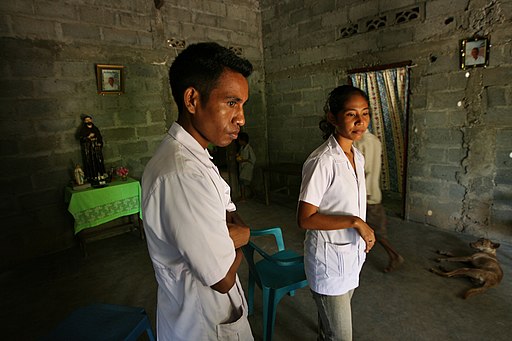5 Things to Know About Healthcare in Timor-Leste

Timor-Leste is a small nation in Southeast Asia of around 1.3 million people. One of the world’s newest countries, Timor-Leste was a Portuguese colony until it was annexed by Indonesia in 1974. Subsequently, it endured nearly 30 years of occupation and unrest before finally winning its independence in 2002. Now a democracy, Timor-Leste has made great progress in terms of combating poverty and improving public health, during the past 20 years. Here are five things to know about healthcare in Timor-Leste.
5 Things to Know About Healthcare in Timor-Leste
- Cuba helped build the healthcare system: Timor-Leste emerged from the Indonesian occupation with heavily damaged infrastructure. Concerning hospitals, 70% were damaged or destroyed and the country faced a critical shortage of doctors. Lacking expertise, the government turned to Cuba for help in educating and deploying a new generation of doctors. To this day, the Cuban Medical Brigade works with partners in Timor-Leste to train new doctors with a community-based approach.
- Poverty negatively impacts public health: Timor-Leste remains a poor country, overall. With a GDP per capita of $1,294 in 2019, poverty is seriously impacting the quality of medical care available to the average person. Around 30% of people survive on less than 88 cents per day. Poverty and health are closely connected. Economic growth is an important part of improving healthcare in Timor-Leste. With economic growth comes rising incomes — allowing people to access better sanitation, nutrition and medicine.
- Life Expectancy is Increasing: The life expectancy in Timor-Leste remains just below the global average. However, standing at 69.26 years in 2018, life expectancy has increased dramatically for the country in the past 30 years. In 1988, for instance, life expectancy stood at just 46.79 years. Greater political stability and an improving system of healthcare in Timor-Leste both in part account for this promising increase.
- Malaria is a national success story: As a tropical nation, Timor-Leste has to deal with frequent outbreaks of deadly diseases. In 2006, for example, the country recorded 223,002 cases of malaria. Timor-Leste worked with the World Health Organization to better institute preventative measures and was able to reach a total of zero cases in 2018.
- Timor-Leste is working with the World Bank to improve healthcare infrastructure: A major challenge for healthcare in Timor-Leste is improving access in rural areas. The nation is currently collaborating with the World Bank to improve supply chains for medicine, through a program known as mSupply. This program aims to provide better information across the country about drug prices, expiration dates and distribution facts. The government hopes that this will help reduce shortages in rural areas and ensure that everyone can have access to basic medication.
A Hopeful Prognosis
While Timor-Leste is still facing the struggles of a developing nation, there have been many positive signs of progress in the past 20 years. The country has made huge strides forward in developing the foundation of a successful healthcare system — showing itself to be effective at treating diseases like malaria while growing life expectancy. With this continued progress, the citizens of Timor-Leste can look forward to a much brighter and healthier future.
– Jack McMahon
Photo: Wikimedia Commons
